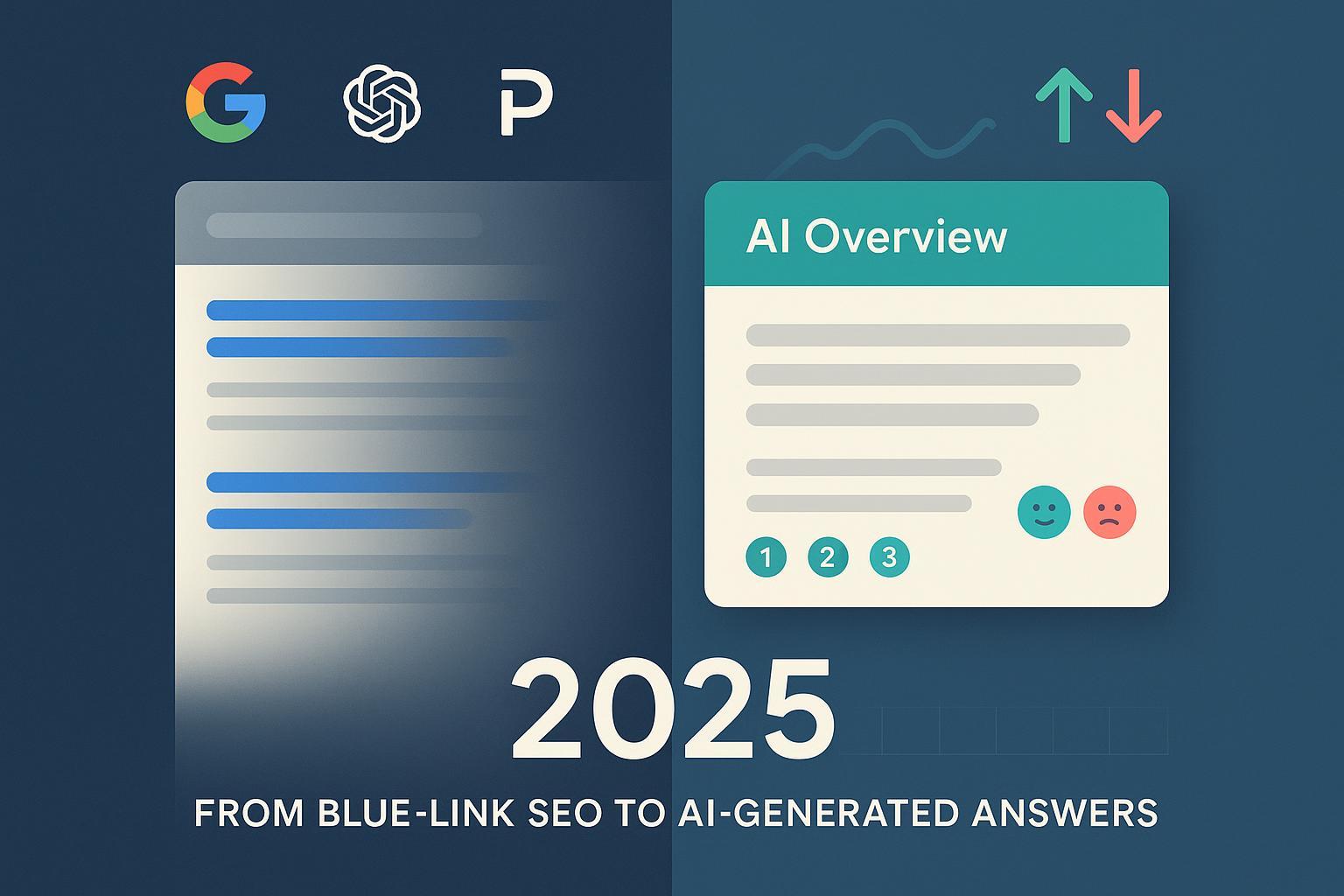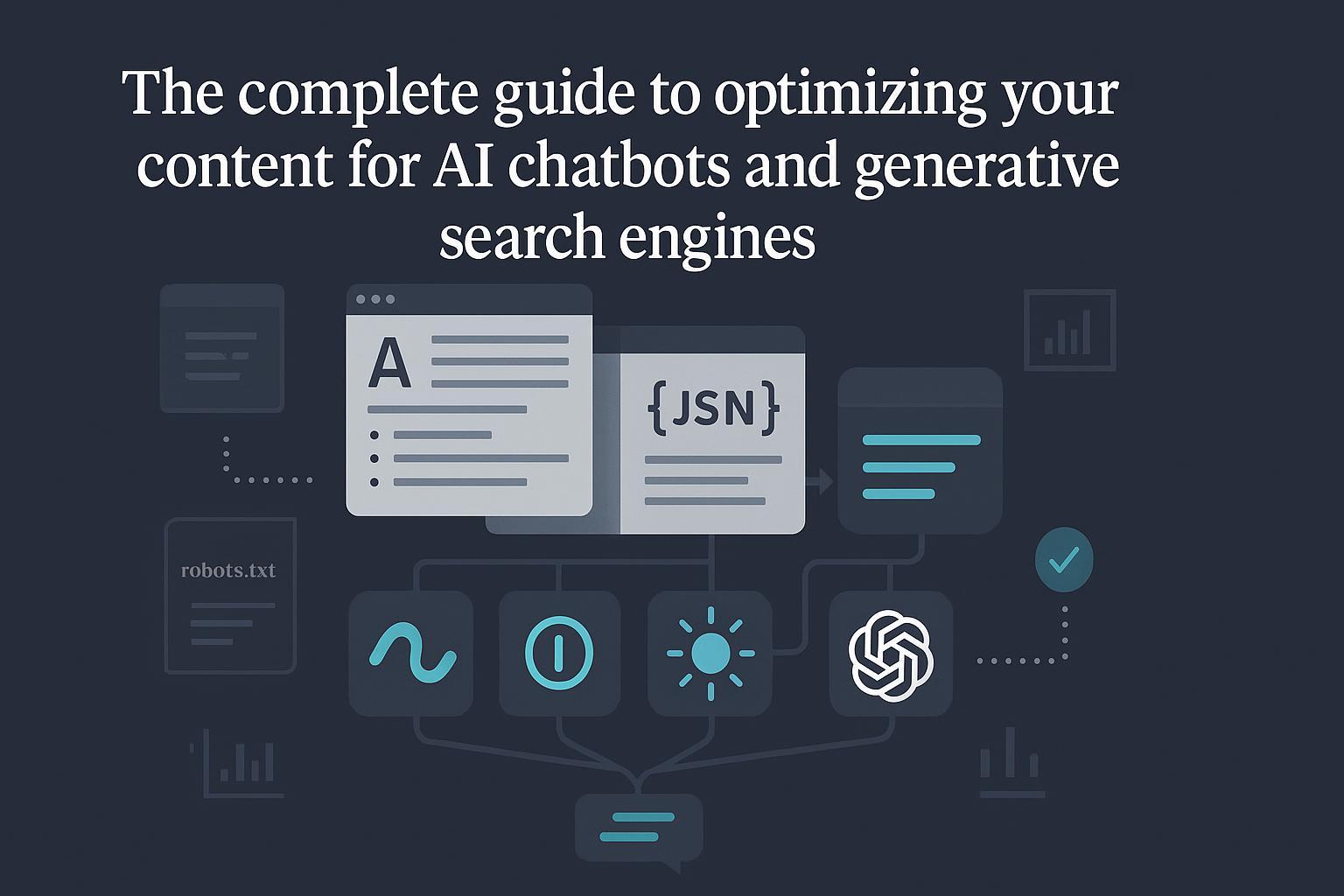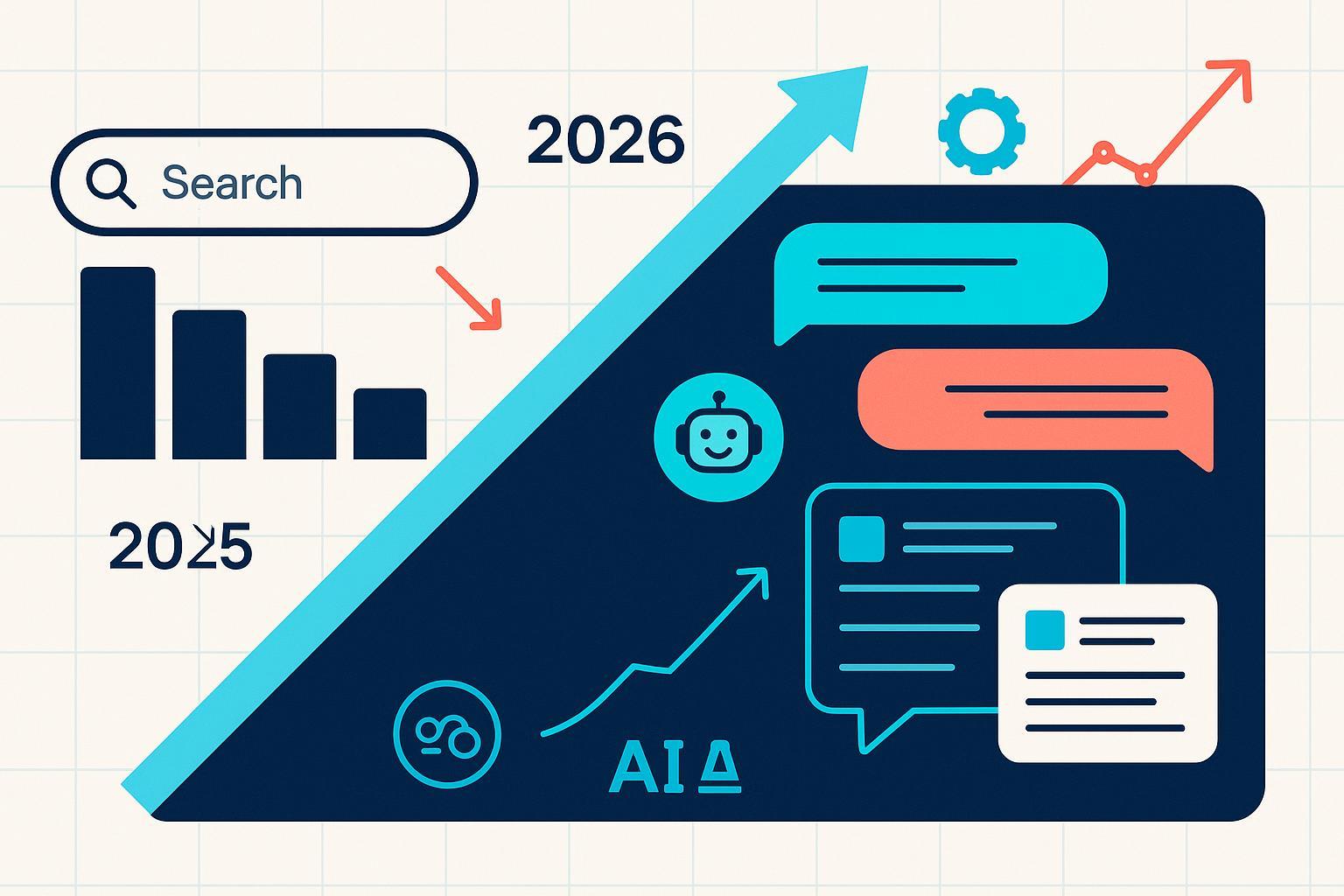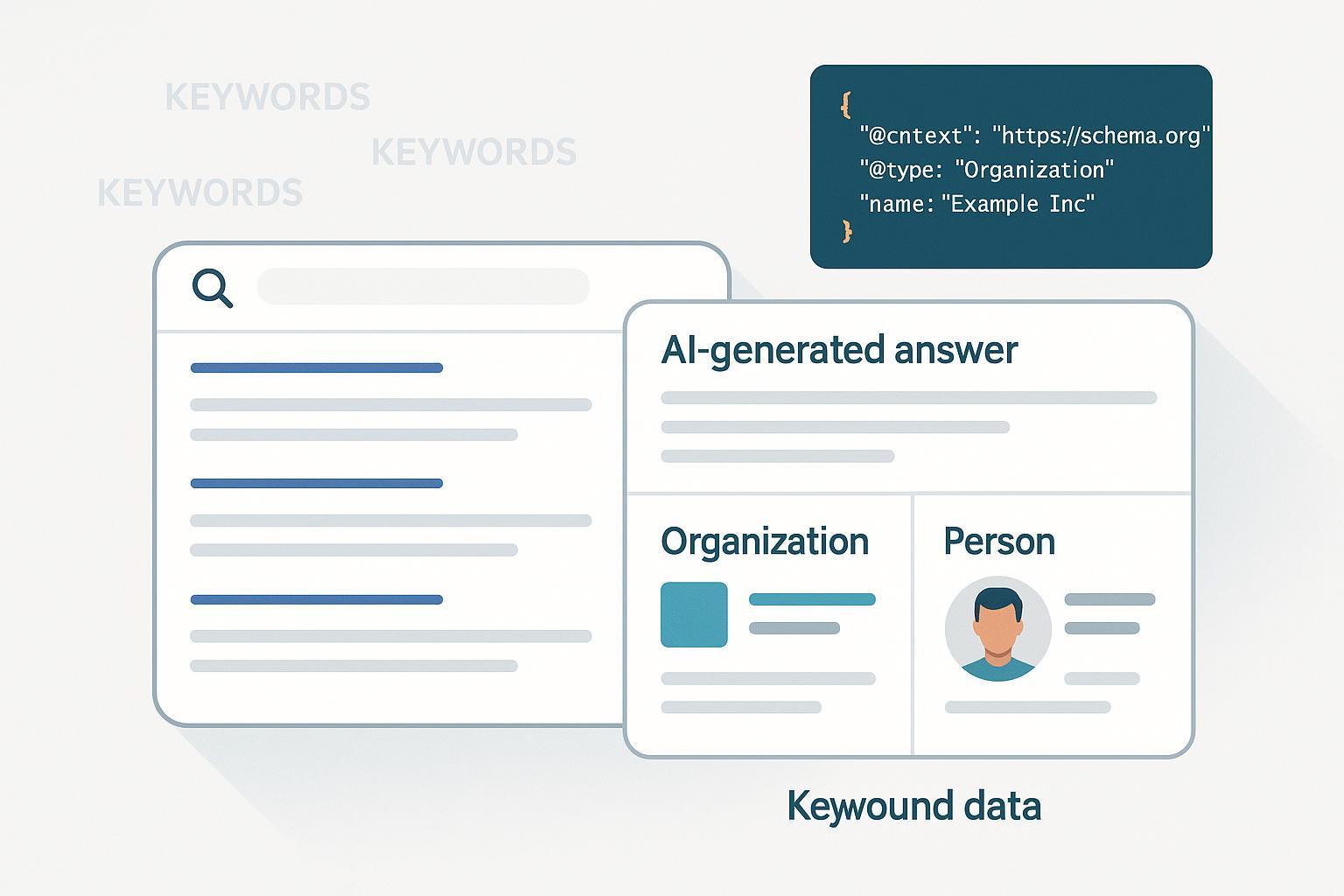GEO Metrics vs Traditional SEO KPIs: 2025 Comparison & Decision Guide
Explore GEO metrics vs traditional SEO KPIs in 2025: compare generative appearance scores, AI visibility, CTR, and rankings. Scenario-based guide helps you choose the right metrics for your strategy.

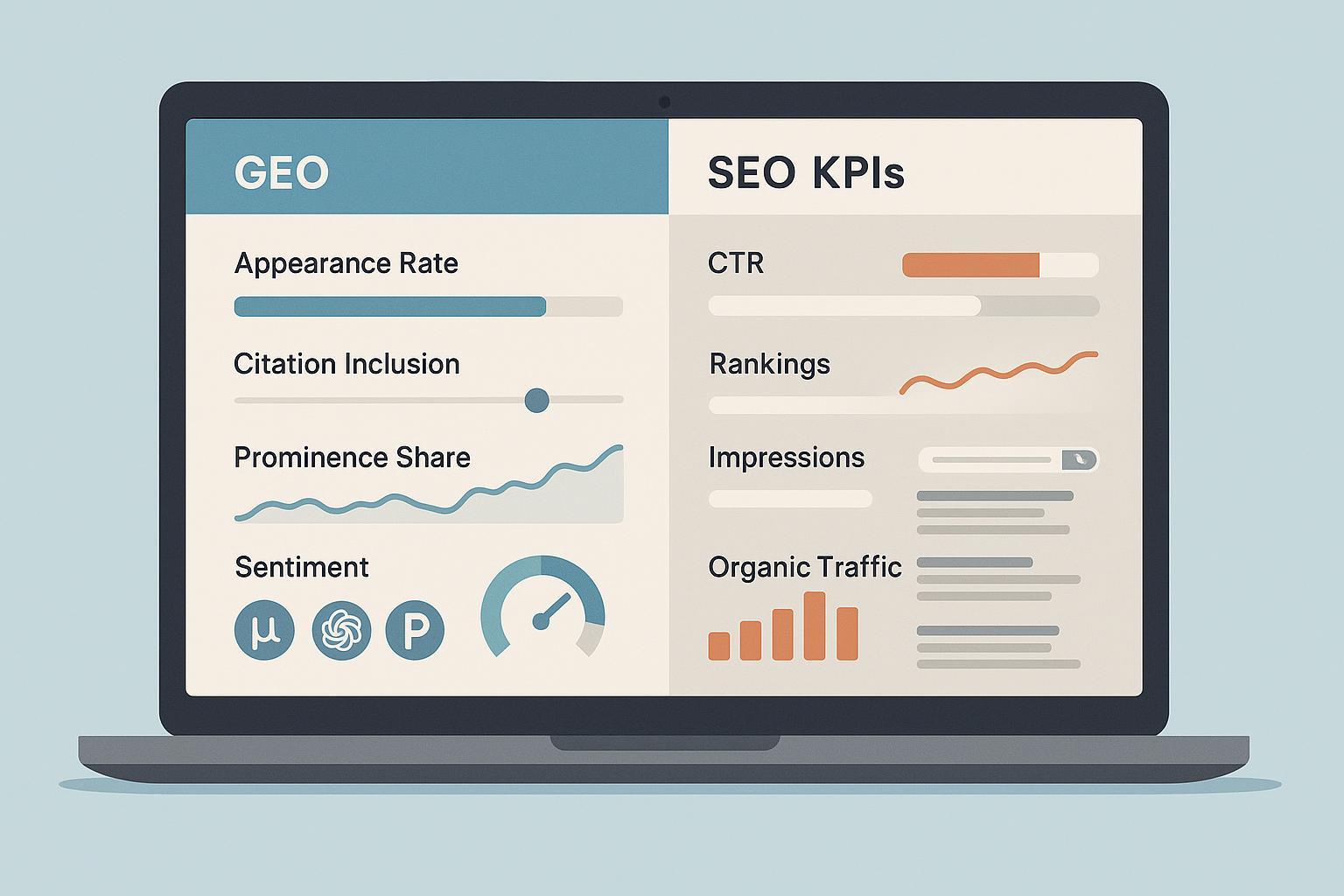
Is it time to judge success by how often AI answers mention you—or should you double down on classic SEO KPIs like CTR and rankings? In 2025, the honest answer is: it depends on the job you’re trying to do. This guide contrasts generative engine optimization (GEO) visibility metrics—appearance rate, citation inclusion, prominence, sentiment, and cross-engine coverage—against traditional SEO KPIs to help you create a measurement stack that fits real goals.
Why GEO metrics emerged (and why they don’t replace SEO)
Generative answers compress search behavior. Multiple large-scale analyses in 2024–2025 found that when Google’s AI Overviews (AIO) appear, organic clicks fall substantially. For example, the large dataset in the Ahrefs 2025 analysis of AI Overviews’ impact on clicks reported an average 34.5% CTR decline on affected queries, with the sharpest drops on non‑branded informational intents. Behavioral research from the Pew Research Center’s 2025 study on AI summaries and clicks showed users clicked 15% of the time without an AI summary vs 8% with a summary in a 68,000-query sample. Earlier operational studies also observed steep declines on AIO queries, such as the Seer Interactive 2024 AIO CTR analysis that found drops concentrated in informational searches.
At the same time, AI systems do cite sources and shape perception—even without a click. That’s why GEO metrics exist: to quantify appearance in AI answers and the quality of that visibility. But it’s not an either/or. For any work tied to revenue and conversions, traditional SEO KPIs remain decisive. The game is to assign the right measurement to the right jobs.
Working definitions: GEO visibility vs traditional SEO KPIs
Below are practical, auditable definitions you can start with. Note that GEO composites aren’t standardized; weights and formulas should be tuned to your goals.
-
GEO appearance rate: The percentage of tested queries where your brand appears in an AI answer/overview (any explicit mention).
- Formula: appearances ÷ total tested queries.
-
Citation inclusion rate: Among those appearances, the share that include a clickable or attributed citation to your domain.
- Formula: appearances with clickable/attributed citations ÷ total appearances.
-
Prominence share: Your share of recommendations or ordering within an AI answer.
- Method: Assign ordinal weights (e.g., 1.0 for first/primary mention, 0.7 second, 0.5 third, 0.3 others) and compute your weighted share, normalized 0–1.
-
Cross-engine coverage: Presence across multiple AI platforms (e.g., Google AIO/AI Mode, ChatGPT Search, Perplexity) for the same query set.
- Formula: engines where you appear ÷ total engines tracked.
-
Sentiment-weighted presence: The tone of mentions (e.g., −1 to +1) weighted by volume across engines; flags harmful summaries early.
-
Traditional SEO KPIs: Click-through rate (CTR), impressions, average position/rank, sessions/organic traffic, and conversions. These align directly to site outcomes and long-standing benchmarking methods.
What recent data tells us about AI answer behavior
- CTR impact is real but variable by intent and vertical. Aggregated findings range from ~15% average CTR declines to much steeper drops on informational queries when AIO is present, as seen across studies including Ahrefs (2025) and Seer (2024). Large behavioral samples from Pew (2025) reinforce fewer clicks when an AI summary appears.
- AI engines vary in citation patterns. Analyses reported by Search Engine Land indicate that Google’s AI surfaces disproportionately cite video—Search Engine Land’s 2025 report on BrightEdge’s YouTube citation share found YouTube was the top-cited domain in AI Overviews (May 2024–Sep 2025). That has practical implications for content formats.
- Prevalence is growing but not universal. A mid‑2025 study found AI Overviews triggered roughly one in eight queries; see the Semrush 2025 AI Overviews prevalence study for time series context.
- Reliability and links aren’t guaranteed. A comparative audit across eight AI search engines by the CJR Tow Center in 2025 found frequent citation issues and factual errors, with quality differing widely by engine.
Takeaway: GEO metrics capture important early‑funnel visibility and authority signals that traditional SEO KPIs don’t, but they sit on a noisier, evolving substrate. Treat them as directional and audit-friendly—not absolute.
A transparent, non‑standard “Generative Appearance Score” you can actually use
Use this composite for internal benchmarking and trend tracking, not for external awards or vendor bake-offs. All inputs are normalized 0–1 before weighting.
-
Inputs and weights (sum to 1):
- Appearance rate: 0.30
- Citation inclusion rate: 0.25
- Prominence share (order-normalized): 0.20
- Cross-engine coverage: 0.15
- Sentiment index: 0.10
-
Calculation: Score = Σ(weight_i × normalized_metric_i)
- Normalize rates as decimals (e.g., 40% → 0.40). Scale sentiment from −1..+1 into 0..1 via (sentiment + 1) ÷ 2.
-
Example (illustrative math): If your appearance rate is 0.40, citation inclusion 0.50, prominence 0.60, cross-engine 0.33, sentiment +0.2 (scaled to 0.60), then:
- Score = 0.30×0.40 + 0.25×0.50 + 0.20×0.60 + 0.15×0.33 + 0.10×0.60 = 0.12 + 0.125 + 0.12 + 0.0495 + 0.06 = 0.4745.
-
Governance notes:
- Document your query set, engines, geos, and devices.
- Freeze weights for a quarter to keep deltas meaningful.
- Keep raw metrics visible alongside the composite for auditability.
Side-by-side: What each framework measures best
| Decision question | GEO metrics (appearance, citation, prominence, sentiment, coverage) | Traditional SEO KPIs (CTR, rankings, impressions, traffic) |
|---|---|---|
| Are we present and cited inside AI answers for discovery queries? | Strong signal. Captures zero-click visibility and brand authority shaping. | Weak. Impressions/rank don’t reflect AI answer inclusion. |
| Which content formats boost inclusion? | Strong when you track per‑format (e.g., video, data studies) and per‑engine. | Indirect; CTR can suggest SERP fit but not AI answer logic. |
| Are we winning high‑intent clicks and revenue now? | Indirect. Appearances may assist, but click paths are ambiguous. | Strong, with sessions and conversions tied to business outcomes. |
| Who owns the category in generative surfaces? | Strong, via cross-engine coverage and prominence share. | Mixed; rankings show classic SERP leadership, not AI answers. |
| How healthy is perception? | Strong, via sentiment-weighted presence. | Absent; you need separate brand sentiment tracking. |
When each framework “wins”: scenario-based guidance
-
Informational discovery and category authority
- Optimize for GEO. Track appearance rate, citation inclusion, and prominence across Google AIO/AI Mode, ChatGPT Search, and Perplexity. Video and structured evidence help, given citation patterns toward multimedia and authoritative sources. Community discussion can matter; see these field-tested tips on Reddit communities and AI citations.
-
Transactional intent and revenue owners
- Optimize for traditional SEO KPIs. Rankings, CTR, organic sessions, and conversions remain the scoreboard. The CTR drag from AIO is typically smaller on branded and transactional terms; keep investing in product detail pages, schema, UX/CWV, and paid/organic mix adjustments.
-
Competitive benchmarking in AI
- Favor GEO. Build a monitored query set by category. For each engine, record if you appear, whether you’re cited with a clickable link, and your order in recommendations. Track a simple prominence index and cross‑engine coverage to visualize competitive movement.
-
Mixed portfolios and executive reporting
- Run both in parallel. Correlate changes in GEO appearance and citation rates with Google Search Console CTR and traffic. For leadership rollups, show a quarterly GEO composite score next to traditional KPIs, then drill down by scenario.
Implementation playbook: from data collection to reporting
- Define the monitored query set
- Group by intent (informational, navigational, transactional), category, and geography. Size for statistical signal (e.g., 200–500 core queries to start).
- Instrument cross-engine checks
- For each query, check Google AIO/AI Mode, ChatGPT Search, and Perplexity on the same cadence. Log presence, the exact citation type (clickable vs attribution-only), and ordering.
- Note engine prevalence changes monthly. Mid‑2025 baseline prevalence was roughly one in eight queries per the Semrush 2025 AI Overviews prevalence study; expect fluctuation by category and region.
- Normalize and score
- Convert rates to decimals and scale sentiment into 0–1. Compute the composite “Generative Appearance Score” with fixed weights for the quarter. Keep raw inputs in the same report view.
- Correlate with classic KPIs
- Align GEO changes with CTR, impressions, and sessions in your analytics. Expect discovery-oriented content to show assisted impacts (e.g., brand search lift) rather than immediate conversions.
- Audit reliability and content levers
- Periodically spot-check AI answers for factual errors and broken citations. The CJR Tow Center 2025 audit on AI engines’ citations found quality varies widely across engines.
- Double down on formats engines like to cite. Observational reporting suggests video often earns citations on Google’s AI surfaces—see Search Engine Land’s 2025 report on BrightEdge’s YouTube citation share. Consider adding expert video explainers to pivotal topics.
- Earning citations: practical levers
- Original data studies with clear methodologies.
- Clear “how-to” explainers and authoritative definitions.
- Expert quotes and consensus summaries that answer queries directly.
- Community validation and discussion that AI systems can find and reference—practical guidance in this post on Reddit communities and AI citations.
- Reporting to stakeholders
- CMOs/VP Marketing: A quarterly GEO composite next to pipeline and share-of-voice, with trend arrows and 2–3 high-impact initiatives.
- SEO managers: Engine-by-engine appearance, citation, and prominence trendlines; keyword cluster breakouts; CTR deltas where AIO is present.
- Content leads: A format map (video, data reports, guides) showing citation yield by engine; backlog tied to gaps.
- Agencies: Client-by-client composites with fixed methodology; quarter-over-quarter deltas; intervention notes.
Limitations and pitfalls to watch
- Non-standardization: The composite score is a practical device, not an industry standard. Always show the ingredients and weights.
- Data volatility: AI engines change behavior. Freeze your weights and query set for a quarter to make trends meaningful.
- Measurement noise: AI citations can be clickable, attribution-only, or missing entirely. Record the type explicitly; treat appearances without links differently from true citations.
- Reliability concerns: Engines may miscite or hallucinate. Spot-audit high-value queries; consider escalation paths when summaries are factually wrong.
- Over-rotating to GEO: Don’t neglect revenue-tied KPIs. Discovery visibility is valuable, but conversions still happen on-site.
Tooling landscape context (neutral)
Operationalizing this workflow typically involves a mix of manual checks, custom scrapers, and vendor tools. If you’re surveying the market, this neutral overview of the tooling landscape comparison can help you understand capability trade-offs before you design your stack.
Bottom line: Build a dual-track measurement stack
- Use GEO metrics to understand and improve your presence inside AI answers for discovery and category leadership.
- Use traditional SEO KPIs to protect and grow high‑intent traffic and revenue.
- Tie the two together with a transparent, auditable composite score and ongoing correlation analysis.
Also consider
- Geneo helps teams track AI visibility across engines and analyze trends alongside traditional SEO KPIs.
Disclosure: Geneo is our product.
Sources cited (selected)
- Ahrefs 2025 analysis of AI Overviews’ impact on clicks
- Pew Research Center’s 2025 study on AI summaries and clicks
- Seer Interactive 2024 AIO CTR analysis
- Semrush 2025 AI Overviews prevalence study
- Search Engine Land’s 2025 report on BrightEdge’s YouTube citation share
- CJR Tow Center 2025 audit on AI engines’ citations


